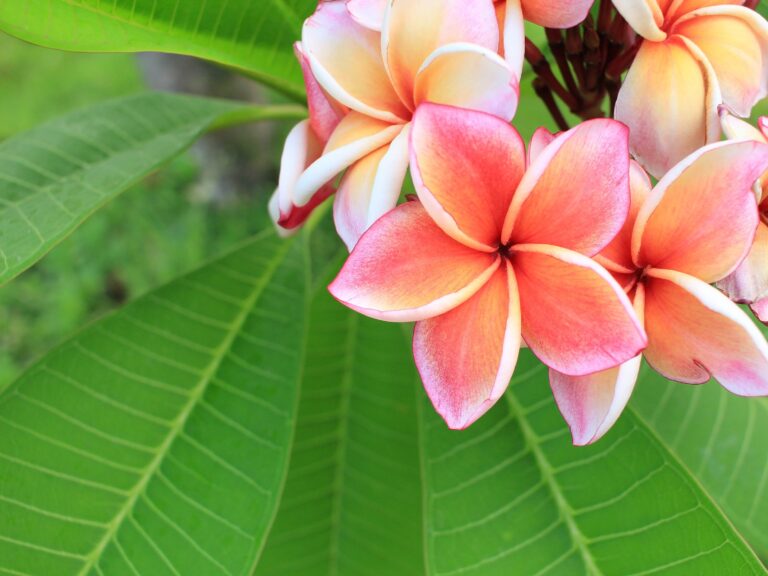If you want us to cut a long story short, there’s never really a bad time to visit Bali and that’s because it’s in the tropics and the weather is pleasant all year round.
However, if you’re wondering what’s the best time to visit Bali for you and your family? Well, you’ll want our guide to help work out the subtle differences between the months and seasons on this paradise island.
Bali And The Tropics
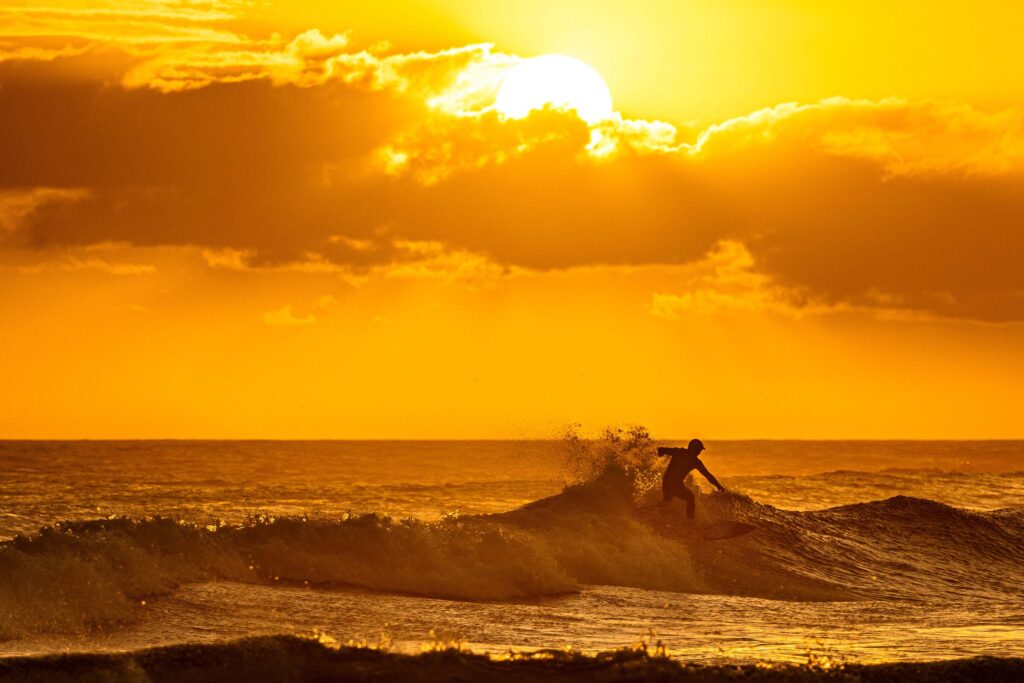
Bali is a tropical destination. That means its location is between the Tropic of Cancer and the Tropic of Capricorn and because of that, it never strays too far from the sun.
In turn, that means that when you visit Bali you won’t experience the four seasons of your own country even if you stay for a year.
Bali doesn’t have four seasons, it has two. A wet and a dry season. You could think of them as the popular time for tourists to come to Bali and the really popular time to visit Bali.
What Is The Best Time Of Year To Visit Bali?
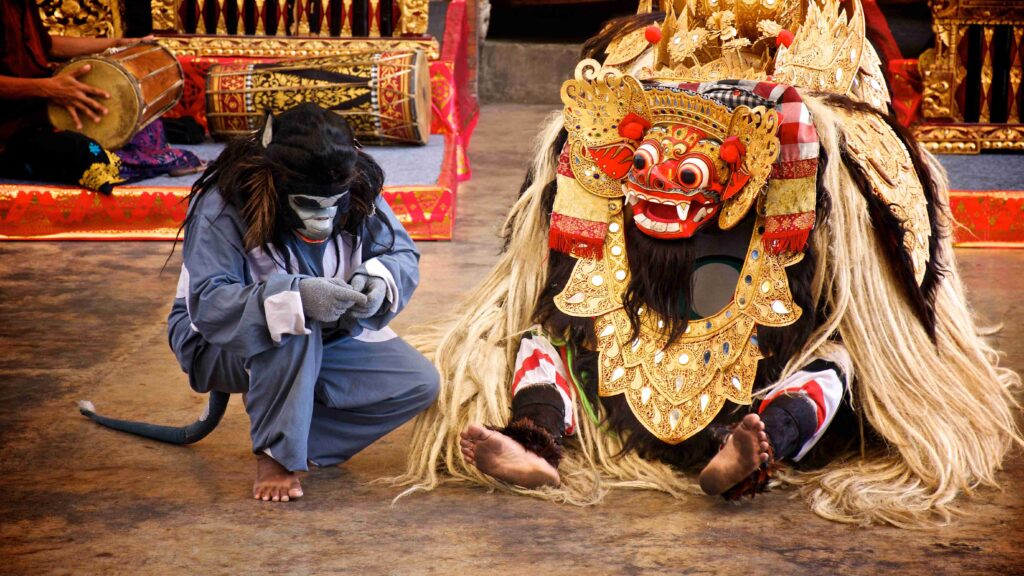
This is very much down to you. There’s never a bad time to come to Bali and we’re not just saying that to lure you through the door of FINNS, the world’s best beach club.
It’s because even in the worst weather, we get around 9 hours of straight sunshine a day in Bali. Sunny days don’t get much better than that in most parts of the world in the middle of the summer months.
However, it tends to be agreed that for general vacations – the best time to visit is when the dry season is in full flow, and the second best time is during the shoulder season (the season where the months transition from wet to dry or vice versa) and then the wet season brings up the rear.
The most popular time of year in Bali is the Christmas to New Year Period. This is fairly ironic as it’s when the worst of the weather is and the most crowds can be found at the island’s tourist attractions.
However, it’s also the best time of year for celebrations and community and the best brunches of the year. You’ll also find some amazing New Year’s Parties like the one at FINNS.
How To Chose The Right Time Of Year To Visit Bali
Before we go through the breakdown of Bali’s weather and your potential visiting times, it might help for you to be clear about what you want from your holiday.
Think about the following:
Can you handle a bit of rain on holiday?
Can you deal with big crowds on holiday?
Does humidity affect you negatively?
What kind of outdoor activities do you want to do in this part of Southeast Asia?
Do you intend to take part in any water sports such as scuba diving and surfing?
If you have a clear understanding of these things, it’s going to make it easier for you to pick the right time of year to go to Bali.
Bali And The Seasons

OK, we’re going to start with a little indication of what the weather’s like when related to the seasons we have at home.
That is though Bali has two distinct seasons, most of us are used to four seasons and it can help to understand how the climate in Bali is going to be during our seasons.
We’re defining Autumn as February to April, Winter as May to July, Spring as August to October, and Summer as November to January.
That’s because Bali is in the Southern Hemisphere and we think it’s easier to relate to Australian seasons (which is handy, because Australians make up the majority of visitors to Bali).
Spring In Bali
This time of year sees the end of the dry season and you start to see a real increase in humidity.
The rain does come in the late Spring but it’s not usually as intense as it can be later on in the rainy season. You get plenty of sunshine each day.
The typical visitor profile tends to show fewer tourists and more digital nomads and expats.
If you come between September and the middle of November, Spring is going to be great for most Bali holidays. You miss the worst of the rain and get the best of the beach weather.

Summer In Bali
This part of the year sees the worst of the wet season and ironically, that comes as Bali sees the most visitors of the year during Xmas and New Year!
The tropical climate can get to its most humid and we suspect it’s the best time to visit, not because of the weather but because of the quirks of the school calendar.
However, all the cultural wonders, tourist spots, etc. are still open and happy to recieve you and Bali remains an ideal destination even in the highest points of the high season.
Autumn In Bali
There’s no guarantee that the rains will stop on the 1st of April but humidity will drop (and so will the volume of rain) during this month.
You must observe Nyepi (the biggest date in the Hindu calendar here – “the day of silence”) if you’re here when it falls.
It’s forbidden to leave your home for the day and you cannot switch the lights on after dark falls.
However, it’s just one day for Nyepi and if you can handle a little rain and some humidity, you get rewarded by fewer crowds at the major tourist attractions and most outdoor activities are just fine to enjoy at this tie of year.
Winter In Bali
It’s the best time of year because it’s warm and dry and in most parts of Bali, there’s a pleasant onshore breeze that makes the tropical climate just a little easier to endure.
However, because you get the best weather and cooler temperatures, you get the most crowds.
Sometimes, it feels like everyone in Australia has come to join in on the fun of being in Bali at this time of year.
That’s great news if you love to take a holiday and enjoy the companionship of your neighbours, but it can be a bit much if you just want to switch off and get away from it all.
The Geography Of Bali
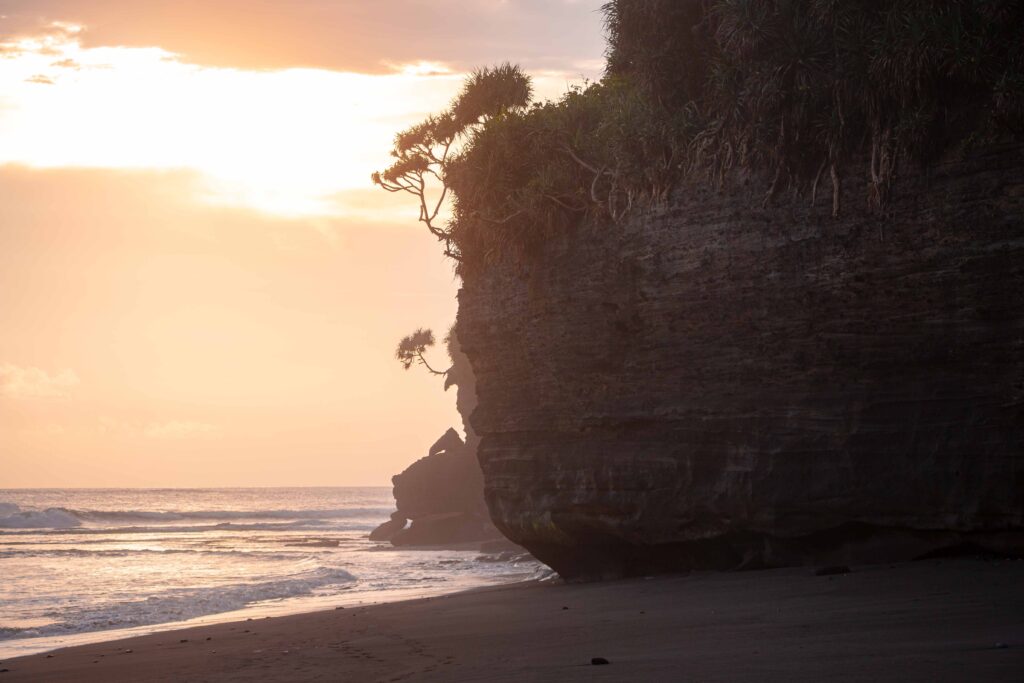
Bali sits in the Indian Ocean not far from where it joins the Pacific Ocean. It is part of the Indonesian archipelago which contains over 17,000 islands!
It’s the most commonly visited part of Indonesia due to its unique Hindu culture and cultural attractions which are a bit more liberal than other areas of Indonesia.
It has wonderful beaches all along the coastline and the heartlands of Bali are exceptionally fertile and wonderfully green with amazing rice terraces and rainforest to explore.
Bali is very close to the equator and that means you’ll find that daylight hours don’t vary very much all year round.
The longest day of the year sees twelve and a half hours of light and the shortest gets eleven and a half! So, sunrise and sunset tend to take place sometime between 6 and 6.30 each day!
Bali is one of the few places where you can almost set your watch to the sun’s rhythm.
The Weather Conditions in Bali

We’ve already touched on the fact that there are really only two distinct seasons in Bali and that’s because of the island’s location in the tropics.
So, the overall temperature is always warm (from mid-20s to mid-30s Celsius or mid-70s to mid-80s Fahrenheit) all year round.
However, there is some variation in the amounts of rain and humidity that the seasons see.
Bali is also not a very big island, so there isn’t a huge amount of variation in weather across the areas at similar altitudes.
It is cooler at higher altitudes and the volcanic peaks in the middle of Bai are cooler all year round than the coastal areas. These higher regions also see more rainfall than the coast does.
The warmest month of the year is April, and the coldest is August. The driest month of the year is August and the wettest is January.
The most popular months to come to Bali are April, June, July, August and December.
The least popular months are September, October, November, January and February.
Bali’s Dry Season

June, July and August are very appealing months to the folks stuck in the Winters of Australia and New Zealand.
You want to book accommodation early if you come at this time of year as there’s a lot of competition for the best rooms and resorts.
Don’t rely on getting what you want last minute, as you’re quite likely to be disappointed if you do.
Dry Season Monthly Overview
If we take a look at the individual months of this season we find that:
April – this is a very warm month but apart from the Easter Holiday (or Spring Break in some places), it’s not as busy as it could be and sees a shoulder season level of visitors.
May – still shoulder season and it’s not quite as hot as April and the humidity starts to drop a little.
June – the temperature drops appreciably and humidity too, this is the month when tourism transitions from the shoulder season to peak season.
July – the schools are out in Australia and the cost of a hotel room can increase by 50% over other months. You must book in advance if you want the best places.
August – the coolest time of year (temperatures are still 22-29 degrees Celsius mind you, that’s 72-85 degrees Fahrenheit). It’s still very popular and Indonesian Independence Day falls in the middle of the month.
September – the schools are back in session and this month gets a bit warmer, a bit more humid and the overall volume of visitors is more like shoulder season.
October – the temperature is rising but it’s still not too humid. There are definitely fewer visitors this month than in the rest of the dry season.
The Best Places In Bali During The Dry Season
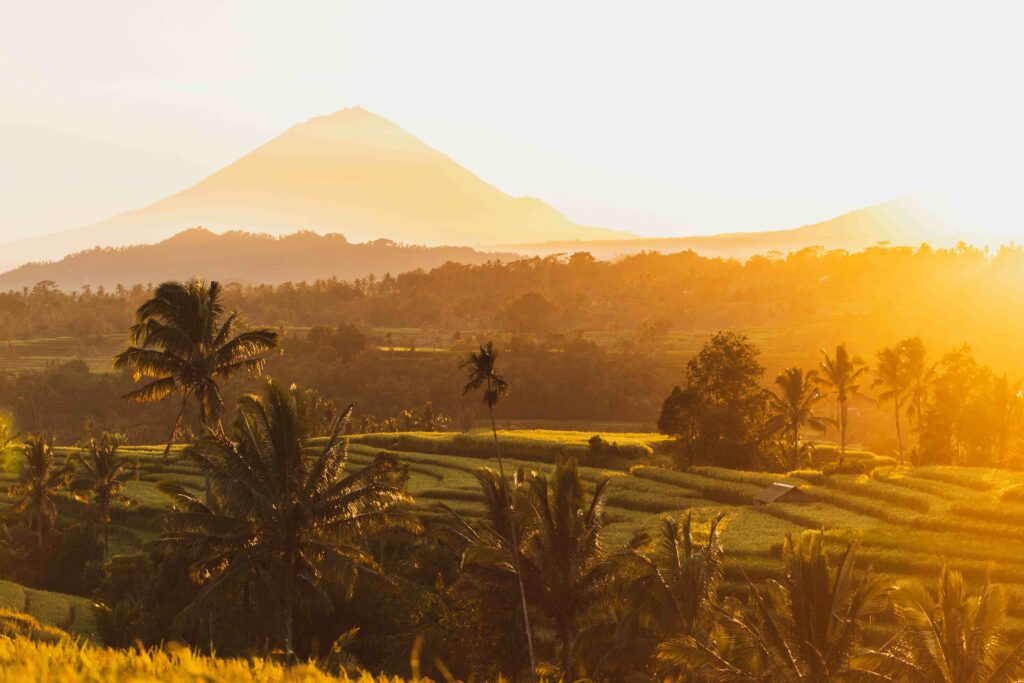
There are plenty of awesome places to visit in Bali at this time of year including:
FINNS Beach Club – it’s amazing at FINNS all year round but you’ll get more time in the sun in the dry season.
Amed – a wonderful diving destination and the place to enjoy the wreck of the USAT Liberty.
Sidemen – this hidden gem is a great place to visit at this time of year, it’s what Ubud was like before it got hugely popular.
Nusa Islands and Gili Islands – these smaller islands near Bali and Lombok are becoming more popular but for now, they’re still relatively unspoiled and super beautiful
The Advantages Of The Dry Season
This time of year can be great for the following reasons:
There is much less rain and, in fact, completely dry days are the norm most of the time
The humidity levels drop and that makes it much easier to explore destinations on land
The mosquitoes tend to clear up thanks to all the stagnant pools of water on the island evaporating
There are lots of things to do such as the Bali Arts Festival (the Bali Arts Festival is in Denpasar one of the less touristed parts of Bali) and the Bali Kite Festival
Indonesian Independence Day and the associated celebrations take place at this time of year
The Downsides Of Visiting Bali During Dry Season
That’s not to say it’s all good at this time of year and there are definite downsides to planning your holiday in Bali in the dry season and they include:
Bigger crowds and longer lines at attractions
A big spike in hotel costs during July and August
High-season traffic is really bad and traffic’s never great in Bali
It’s harder to get bookings at popular restaurants and spas
What To Pack For The Balinese Dry Season?
There are a few things you can bring with you to make your time in Bali at this time of year more fun:
Decent hiking shoes (we know, you won’t forget your thongs) but a lot of activities really require some decent grip on surfaces
Swimwear
Sunscreen (ideally this should be water-resistant and kind to coral)
Water sports gear
Bali’s Rainy Season

The rainy season in Bali sees the highest temperatures, the highest levels of humidity (thanks to regular rain), quite a bit of rain and more mosquitoes.
It’s the “low season” for tourists but don’t be fooled, the rainy season is still very popular in Bali and you get plenty of sunshine nearly every day throughout the season.
Wet Season Monthly Overview
So, let’s take a look at the best time to visit or plan a Bali trip in the rainy season. Our month by month break down is as follows:
November – it’s hot and humid and sadly, the seas tend to be at their roughest during this month. Experienced divers, surfers, etc. may appreciate the additional challenge, mind you, but beginners might want to pick a different month.
December – it’s still hot and humid and the early part of the month is quite quiet. However, once Christmas arrives it’s the busiest part of the year and daytime temperatures peaking at 33 degrees won’t put anyone off. Hotel prices are high between Xmas and New Year and reservations a long way in advance are recommended.
January – the quietest month of the year from a tourism perspective. It’s also when you’re most likely to get rained on.
February – we’re starting to head into shoulder season by this point of the year but it keeps raining on a regular basis.
March – tourism levels rise even though Nyepi (the day of silence) falls in this month. Just be aware that for Nyepi you can’t go out and be sure that doesn’t matter to you before you book in March.
The Best Places In Bali During The Rainy Season
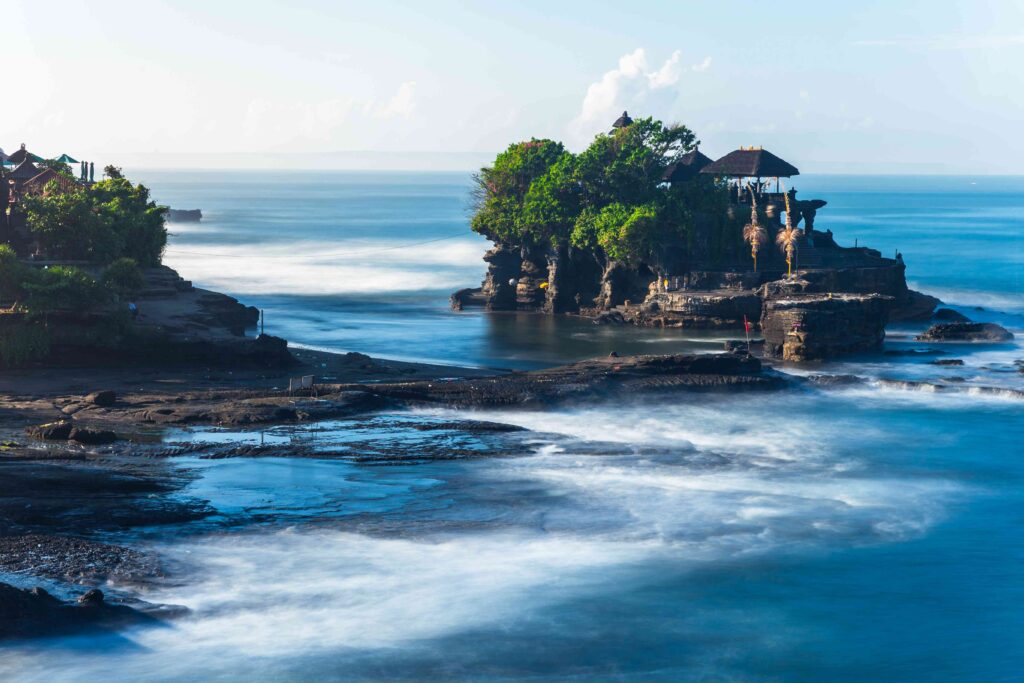
The big tourist attractions are great to visit during this time of year thanks to the lower numbers of visitors.
We can recommend:
Tanah Lot Temple – get there at low tide to enjoy the walk out to the temple entrance and a blessing ceremony
Uluwatu Temple – amazing views from the cliffs, Balinese culture and lots of monkeys!
Bali’s Waterfalls – all the waterfalls in Bali are more majestic when it rains
FINNS Beach Club – with an average of 9 hours of sunshine a day, you can still have an amazing time at the world’s best beach club
The Advantages Of The Rainy Season
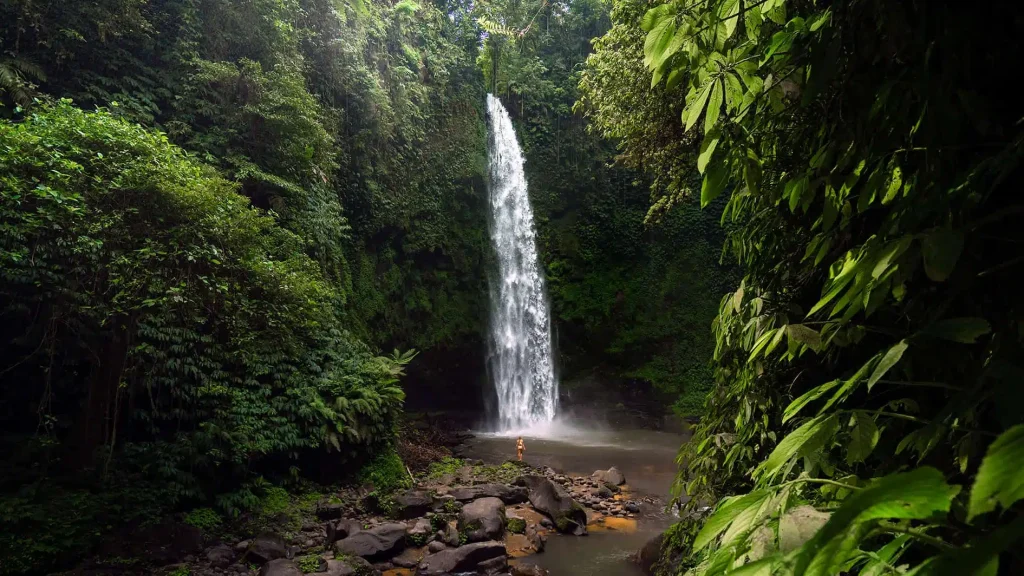
There are, of course, some real advantages to a visit this time of year and they include:
It’s a bit less crowded – the humidity puts some people off from visiting and that can be used to your advantage
There’s less traffic – this is a real plus as Balinese traffic is pretty unpleasant when it’s at its busiest
It’s still sunny – we keep saying it because it’s true, 9 hours a day of pure sunshine on average at this time of year
It is greener and waterfalls carry more water – Bali shows itself from its most beautiful sides
The Downsides Of Visiting Bali During The Rainy Season
But it’s the low season for a reason too and you will find that’s because:
It rains more – well, it isn’t the rainy season for nothing
It’s hotter – it’s not unpleasantly hot if you want a beach holiday but it can be a bit more draining for long hikes and outdoor sports
It’s more humid – this really bothers some people and some people barely notice it
More insects and mosquitoes – they like the humidity and the pools of water all over the place
Diving isn’t as good – visibility drops during rainy season
What To Pack For The Rainy Season in Bali
There are a few things that can make your trip more fun at this time of year too including:
Bug spray (ideally with DEET) – getting bitten isn’t much fun, so send those mozzies packing before they get chewing
Rain clothes – a light rain jacket or a plastic poncho can really make a difference to your overall enjoyment of a day
Thongs – the best footwear for casual use in the rain are cheap, rubber thongs
Breathable clothing – in the humidity, you’ll appreciate being able to get rid of your perspiration
FAQs
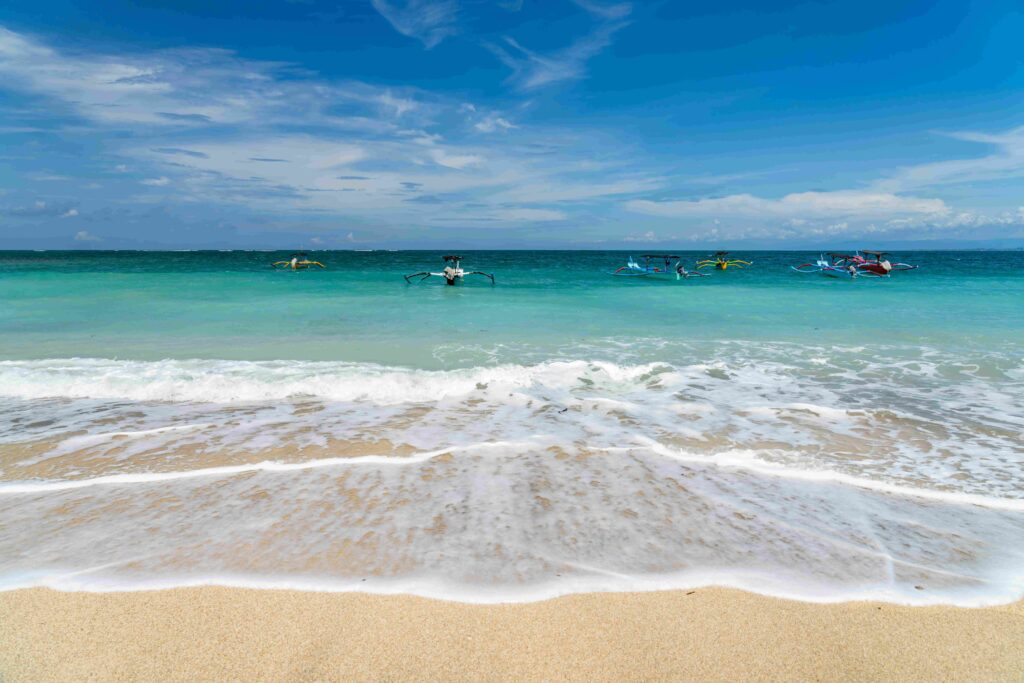
What Are The Best And Worst Months To Go To Bali?
There are no best and worst months to visit Bali in.
In fact, the busiest time of year is the peak season in the Christmas to New Year period, where the weather is, very often, at its worst!
That’s because even in the middle of the rainy season months, you will find that this paradise island gets over 9 hours of sunshine a day on average!
So, what better time for a break than when the schools are out back home and everyone’s looking for a bit of cheer?
Bali’s weather will support you in having fun all year round and we think you will find that visiting Bali is always a rewarding experience whenever you travel.
However, having said that you may have specific activities in mind during your time in Bali and you should see our guide above to find out the best weather for those activities.
What Month Is The Hottest In Bali? What Is The Hottest Month In Bali?
There are two months when things get really hot in Bali and they are April and October.
These are the transition months between wet and dry seasons and not only is the average temperature around 32 degrees Celsius (that’s about 90 degrees Fahrenheit) but the relative humidity on the island hits 75%.
It’s pretty sticky at this time of year. However, it’s less humid than it is in January when the rain delivers a relative humidity of up to 85%.
What Is The Cheapest Time To Go To Bali?
October, November, February, and March are all slower months in Bali’s wet season and that means you can usually get cheaper accommodation, flights and even local tours in these months.
It’s important to remember though that there are certain events and activities that are not as good at this time of year.
Certainly, if you want to enjoy specific water sports, then you might want to ensure your travel dates support the water sports you want to do.
Rice paddies, however, a going to look amazing during the rainy season months and if you visit Bali in these months, places like Ubud Monkey Forest will be really lovely.
How Do I Book A Trip To Bali?
We always recommend that people who visit Bali should book via the Bali Res Centre. This is our favourite travel agency service because it’s based right here in Bali.
That means you get the benefit of local knowledge when deciding what time to visit Bali and you can avoid things like checking into a hotel that is next door to a building site.
You will also get very competitive pricing as the folks there are always negotiating great deals with local hotels, villas, tour companies, etc.
Best of all it means your tourist dollars support the Balinese local economy and don’t just disappear into the pockets of an offshore multinational company with no interest in Bali except to profit from it.
Final Thoughts On The Best Time To Visit Bali
There may never be a bad time to visit Bali but you can certainly visit Bali at the best time for your needs and for your family’s needs.
Scuba diving isn’t as much fun in the low season when the rains come. If you’re seeking seclusion and relaxation, you might want to skip peak season and so on…
The Bali weather is pleasant all year round, but the best time to visit Bali is when you can enjoy the activities that you want to do here to the fullest. See you soon.



